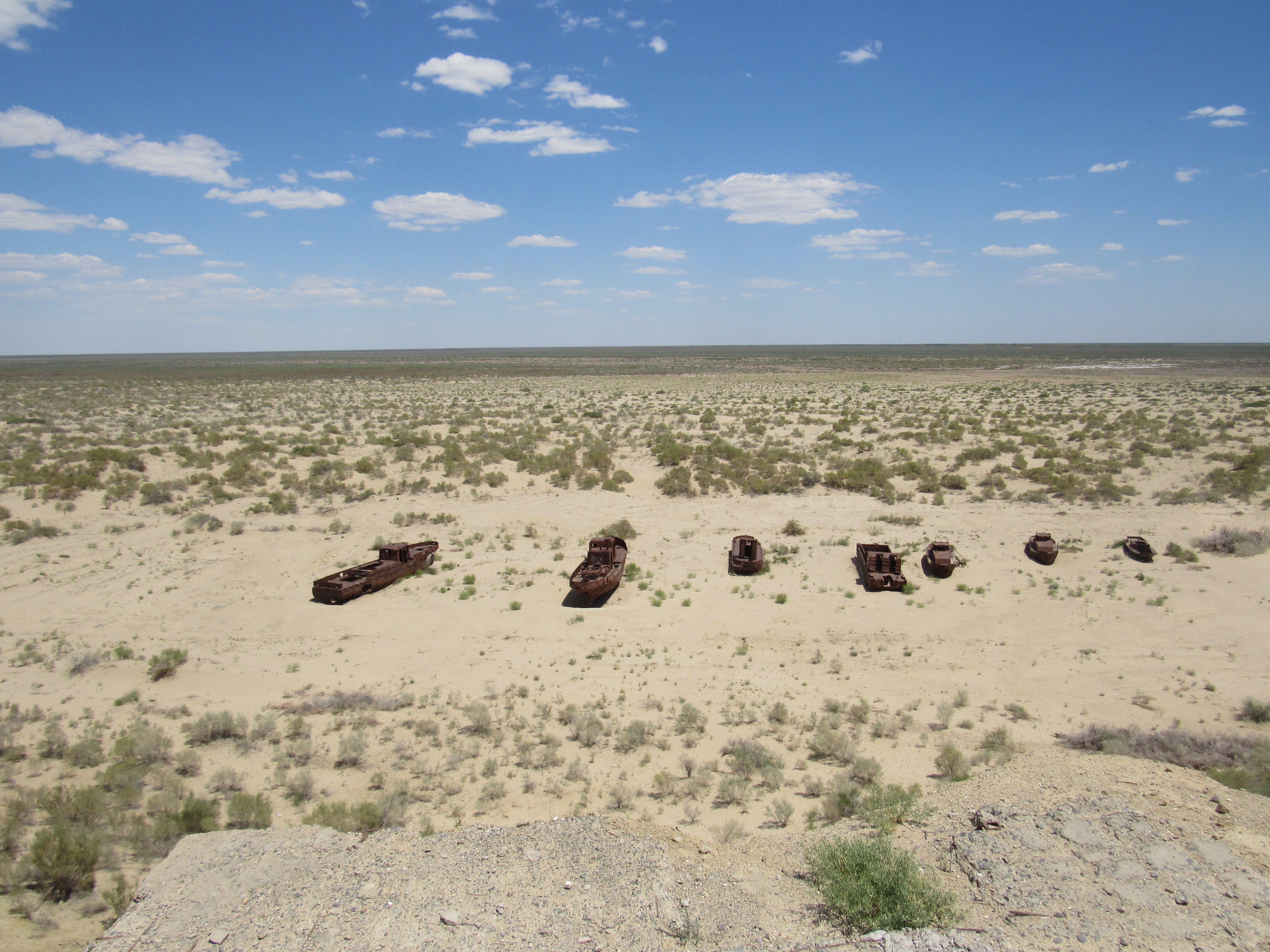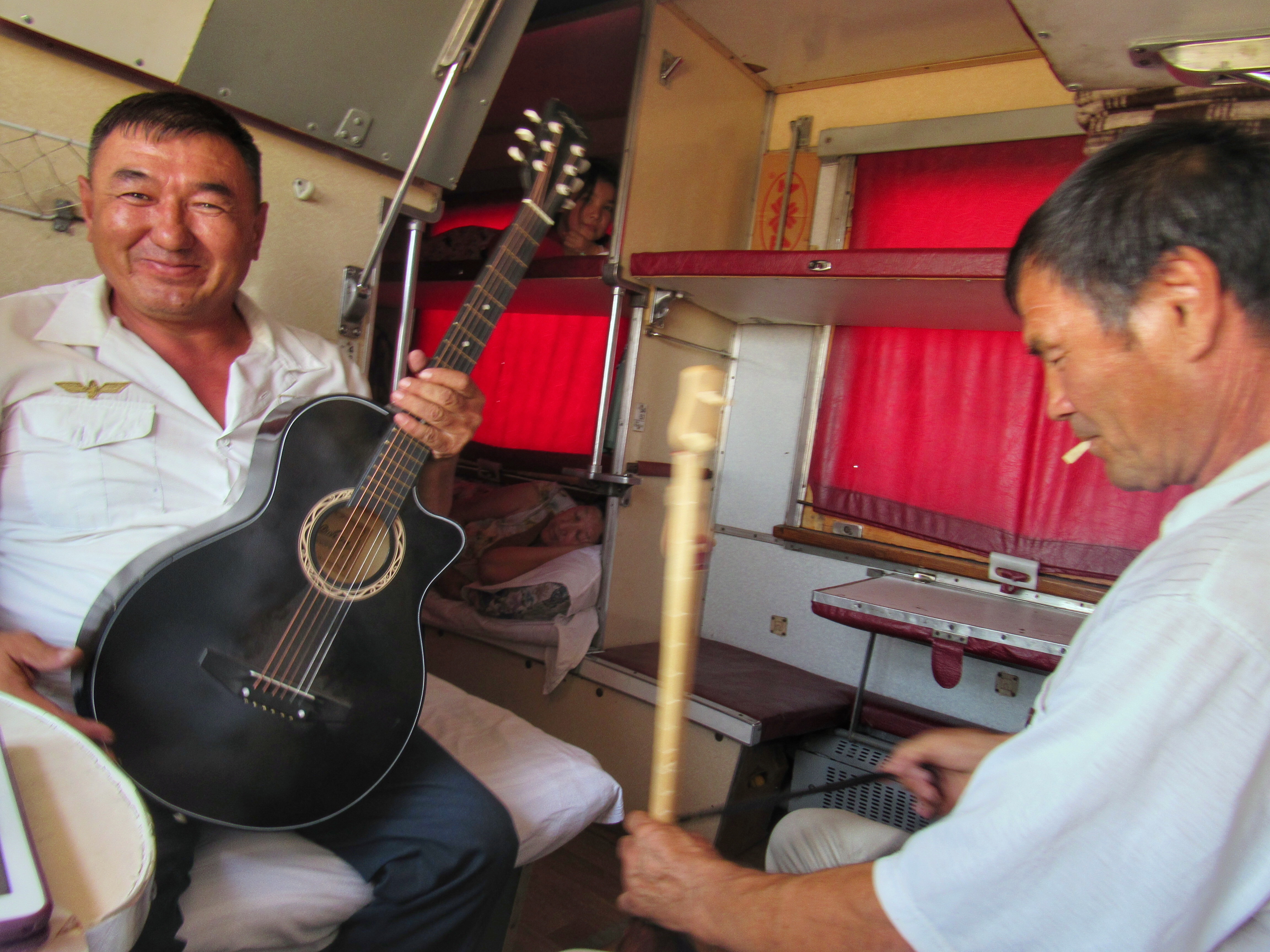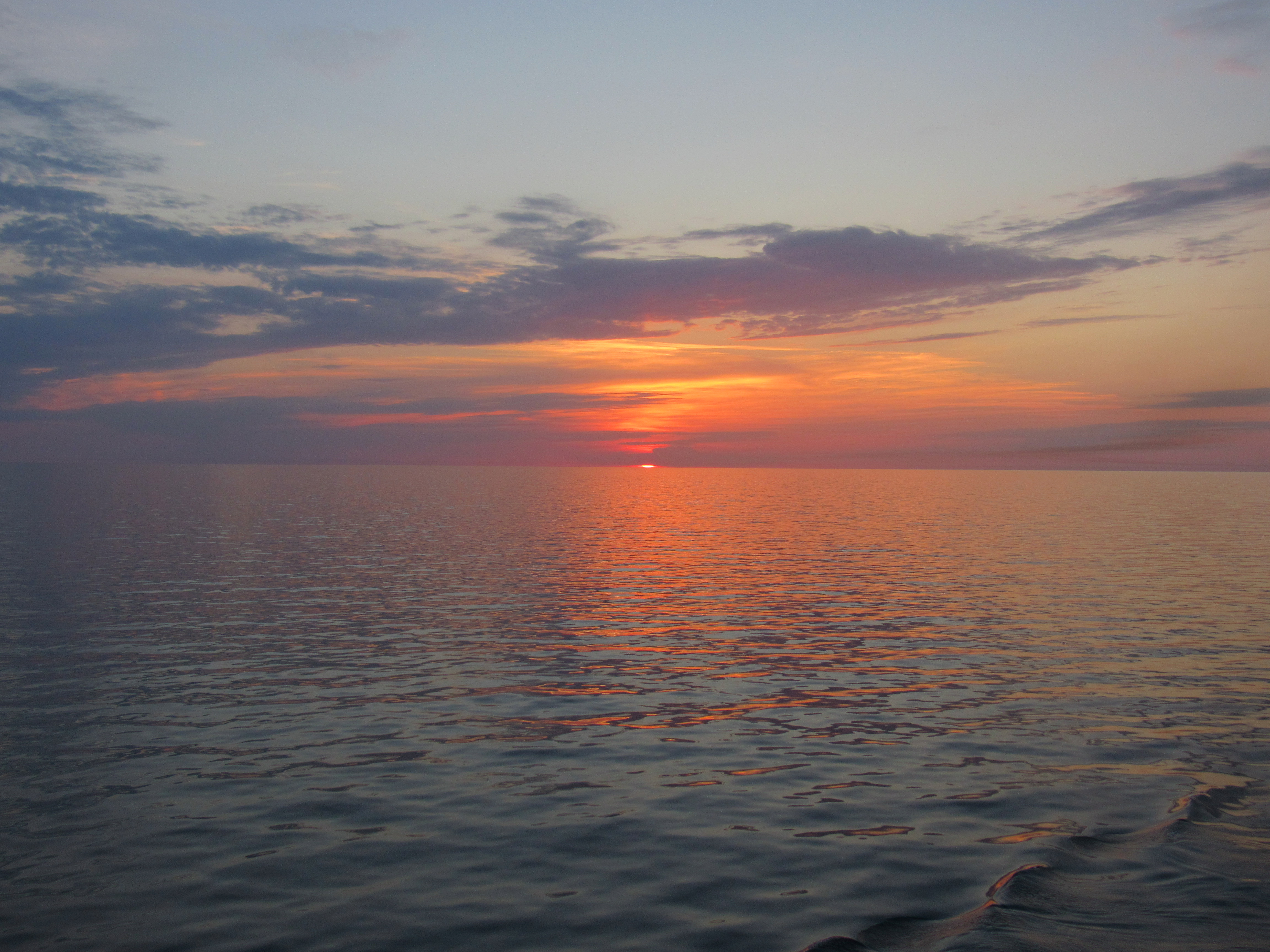I hadn’t heard of Karakalpakstan (Qaraqalpaqstan) until I found myself here. It’s actually the ‘Autonomous’ Republic of Karakalpakstan but since having that name it’s been part of the USSR and now part of Uzbekistan. ‘Autonomous’ seems to be a name given to people around here who are not really free and independent at all. The 600,000 or so Karakalpaks are one of the poorest groups in Central Asia. The average income is around $20 per month and they live in basic adobe huts or old Soviet apartment blocks out here in the desert. Despite being picked on and discriminated against by just about everyone, they are big and jolly and some of the nicest people we’ve come across anywhere.
The capital of Karakalpakstan is Nu’kus and there is not much here but it has the most incredible museum and art gallery known as the ‘Savitsky Museum’. It’s the work of one Savitsky, a Russian artist, who dedicated his life to preserving the cultural artefacts of the Karakalpaks and rescuing the outlawed avant-garde artworks of the Soviet era. Top man Savitsky hid all these amazing paintings and sculptures out here in Nu’kus where nobody thought to look for them. It’s the second largest collection of Russian avant-garde art in the world (after St. Petersburg) and one of the largest collections of Central Asian art and artefacts. It’s amazing. I didn’t take any photos because you had to pay $20 for that privilege. You’ll have to come and see it for yourself.

The Amu Darya, one of the longest rivers in Central Asia, once ran through Nu’kus on her way to the Aral Sea. During Soviet times, the Amu Darya and her sister river (the Syr Darya) were used to irrigate the cotton farms until eventually they dried up. There is no river here anymore.

The Aral Sea used to be the fourth largest lake in the world (68,000 square km). When the rivers dried up and the Aral Sea was no longer being replenished, it started to die. By 1997 only 10% remained. This whole region is now nothing but salty, toxic desert, with diminished rainfall and polluted by pesticide residues from the cotton farms. The birds, fish, plants and animals are all gone. It’s known as the worst human-created environmental disaster to date – complete ecosystem collapse. To see the scale of this destruction is both shocking and heartbreaking. It also makes me really angry. They could see it happening but didn’t stop. The same as the Murray-Darling in Australia. Cotton is not a necessity but water is.


Moy’naq used to be a major fishing port on the Aral Sea. What’s left of the ‘Sea’ is now 200km away. For over a hundred years there was a huge fish canning factory at Moy’naq. It closed in 1998. All of the industries and jobs are gone. It’s very sad to see the empty harbour and the lighthouse looking out over the desert.

On most days, the train to Beyneu pulls into Nu’kus around 4am, a ridiculously inconvenient time of day. It takes 12 or 14 hours to wander across the harsh desert to Beyneu, just over the border in Kazakhstan. There’s only one type of ticket – ‘platzkart’ or 3rd class sleeper – a series of open six-bunk cabins with three platform-style bunks on each side. There’s a samovar with hot water and a toilet at the end of each carriage. There’s no privacy and no air conditioning and the 40 degree heat is intense. You can open the window a little bit though if you can manage to prop it open with something. Nobody else opens their windows because apparently they’re afraid of catching a chill.

Karakalpak women in brightly coloured headscarves and summer dresses race up and down the carriages carrying huge bags of things to sell – SIM cards, currency exchange, clothes, food and drinks. You can do all your business on this train. One guy was selling beautiful wooden handmade musical instruments. He stopped to play us a tune and had a go on JH’s guitar. A few people had a go on the guitar, including the train conductor. The Karakalpak language has a kind of burbling cadence and they talk constantly at top volume. They also laugh a lot. Google Translator doesn’t know this language but we managed to communicate just fine. The Karakalpak people are so friendly and warm. Everyone passing by sits down on your bunk and has a chat. One very old woman was telling JH, with hilarious mime, that he should have a shave and tidy himself up. So funny.

Out the window there’s nothing to see but desert and the occasional sad looking camel. The old train constantly groans to a halt in the middle of nowhere and people get on and off. On arrival in Beyneu, we suddenly have to get off the train. There are people and trains everywhere. There’s no platform so we have to climb down onto the tracks with our luggage and run up the tracks in the blinding heat, trying to get around the end of the very long train. We struggled across one set of tracks only to see yet another very long train blocking the way to the platform. Then, ‘our best train conductor ever’ appeared out of thin air and led us straight up and along the train, then through the train to the platform on the other side. We’re in Kazakhstan!

We thought Nu’kus was remote but Beyneu is actually the end of the earth. It seems there are no restaurants or cafes in town but we found a little shop down a sandy street and past some rusted out old cars. Here we bought a cucumber, that had seen better days, to put on our leftover stale bread for dinner. We left the next day.
Between Beyneu and Aktau there is more desert, miles of oil and gas mines, and camels. Lots of camels.

We were very excited to get to Aktau, the shipping port on the inland Caspian Sea. I’d booked an apartment, and after a series of long journeys and hotel rooms, I couldn’t wait for a hot shower, washing clothes, cooking proper food and just chilling for a bit. The apartment was perfect – all comfortable and cosy – with a kitchen table and just a short walk to the sea. Aktau looked really interesting and I was looking forward to exploring. I love port towns.

From Aktau, we hoped to get on a cargo ferry across the Caspian Sea to Azerbaijan. While I was searching the internet looking for information about how to go about it, I came across a Lonely Planet quote that describes the process as a ‘dark art’. It most surely is. The ferries have no set schedule and arrive and leave when they’re full. The cargo is their priority but they’ll take passengers if you happen to be there when they’re ready to go. I found a number to ring on an internet forum and rang it on the off-chance. Amazingly, the guy spoke English. He said ‘the boat’s leaving tomorrow, you’ll have to be at the new port at Kyryk (70km away) by 11am. It will leave at 2pm’. It’s great that there’s a boat but so soon! There goes my Aktau holiday. So off we go to buy supplies and have a quick look at the sea.
I get pre-boat jitters before I go on a boat journey. I love small boats, like dugout canoes, but big boats are creepy. I had this vision of a huge grey ghost-ship travelling across a foggy Caspian Sea, like in the Rhyme of the Ancient Mariner. Next thing, we’re just settling in for our one night of relaxation in the lovely apartment, when the guy rings back and says ‘the boat’s going early, you’ll have to go tonight’. Damn.
We arrived at the port at 1am as instructed. It was dark and deserted and there was nobody there. A security guard appeared and motioned for us to go into an empty waiting room and sleep on the metal chairs. Not a good sign. Another six or seven very uncomfortable hours later and three young Kazakh law students came to wait for the boat too. After 13 hours of waiting we finally got on the boat. Another three hours after that we started moving. I was most relieved to see that the boat wasn’t grey and there was no mist.

We only ended up spending a total of four nights in Kazakhstan after all. One on a train, one in a train station, one in the port and one in the hotel in Beyneu. Kazakhstan is a big country but that’s going to have to be a journey for another day.
The crossing is supposed to take 30 hours. We got a cabin to ourselves with two bunk beds and a porthole that opens. Luxury! Is it still a porthole if it’s not round? There’s no air conditioning and the cabin is unbearably hot, even with the open porthole. On the ferry, there are the three lovely students from Kazakhstan, about 20 drunk and rowdy Georgian truck drivers, and us. Three meals a day are provided and after I tell the cook we’re vegetarian we have our own special plates at every meal. The food is basic but edible and it’s kind of fun eating with everyone in the ‘dining room’.

The sea is calm like sailing across a big lake, which of course we are. It’s very relaxing with no internet and nothing to see but the sea.


Beautiful 👍
LikeLike
Such interesting places Tink
LikeLike
How did yu get t the ferry?
I’m so glad I am taking this journey digitally with you, cos I would have had about 217 stress induced heart attacks by now 🙂 xxx
LikeLike
Taxi! Haha. It’s all fun and games x
LikeLike